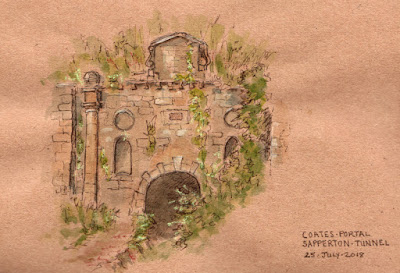Seemingly in the middle of nowhere, at the end of a long, narrow gravel track is The Tunnel House Inn, surrounded by fields and shady, woodland areas. Steps down a steep slope lead to a long disused canal and a grand Georgian style tunnel entrance, known as the Coates Portal.
The Sapperton Tunnel was constructed in 1784-9 and, at over 2 miles, was the longest ever built at the time. The tunnel was too narrow to accommodate a tow path for the horses which pulled the barges, therefore a couple of men would lay on their backs on the front of the barge and "walk" their way along the walls, hence earning the name "leggers". Meanwhile, the horses had to be led overground to meet up at the other end of the tunnel at Daneway.
The Tunnel House originally served as a hostel for the construction workers, but once the canal was in use it became a place for refreshment. Traffic through the tunnel ceased in 1911 and subsequent roof falls made it impassable. The portals at both ends were restored in the 1970s, but efforts to restore the weak areas of the interior seem to have been abandoned.
My sketches were done with sepia fine liner, watercolour, gouache, wax crayon and white gel pen.



















